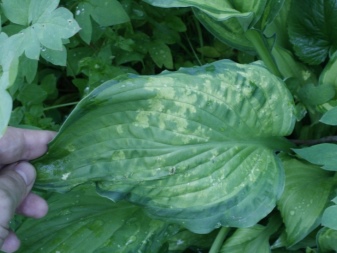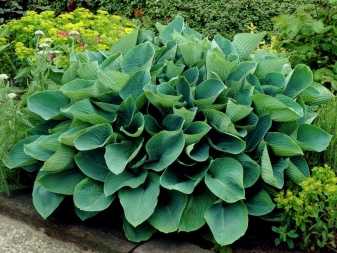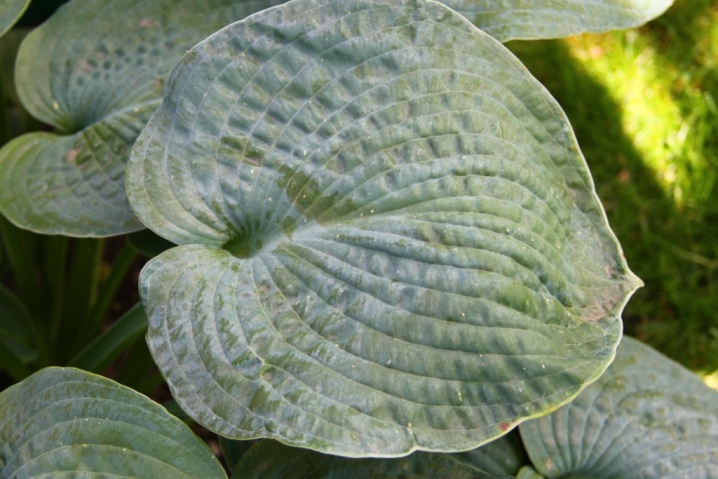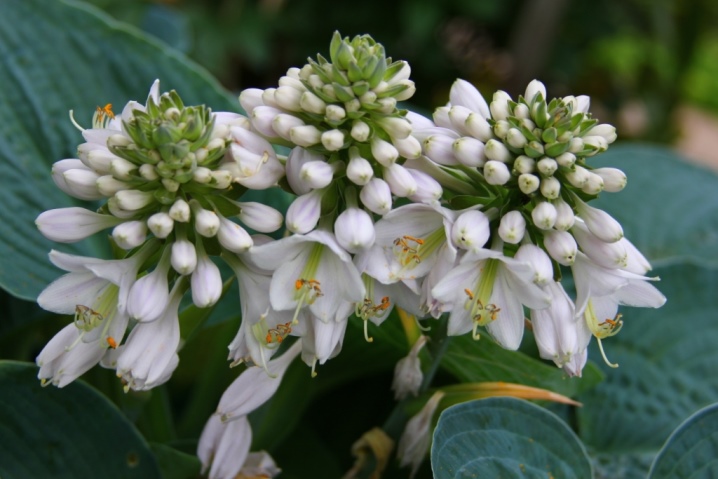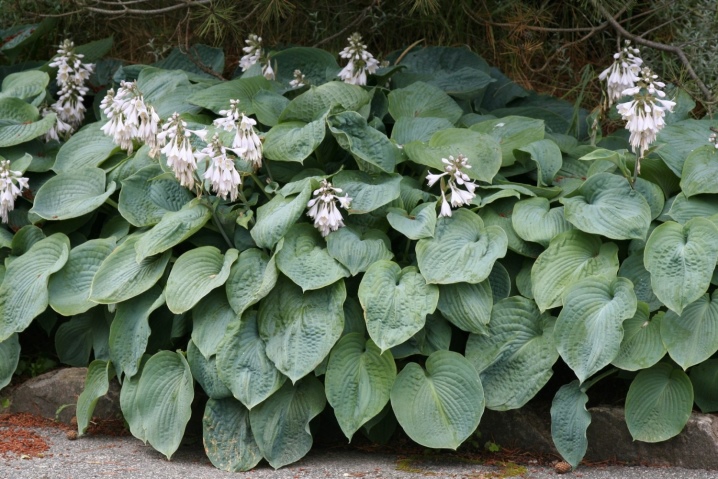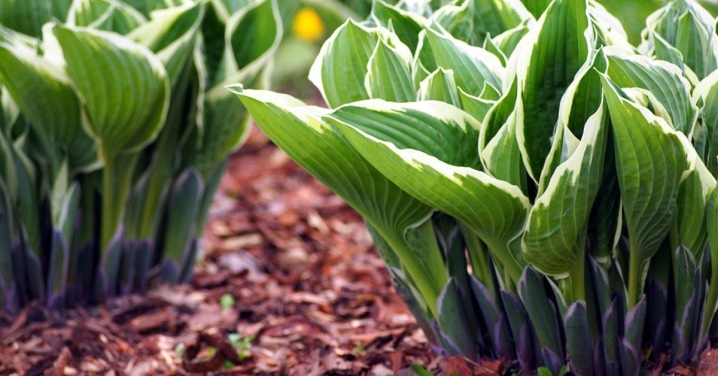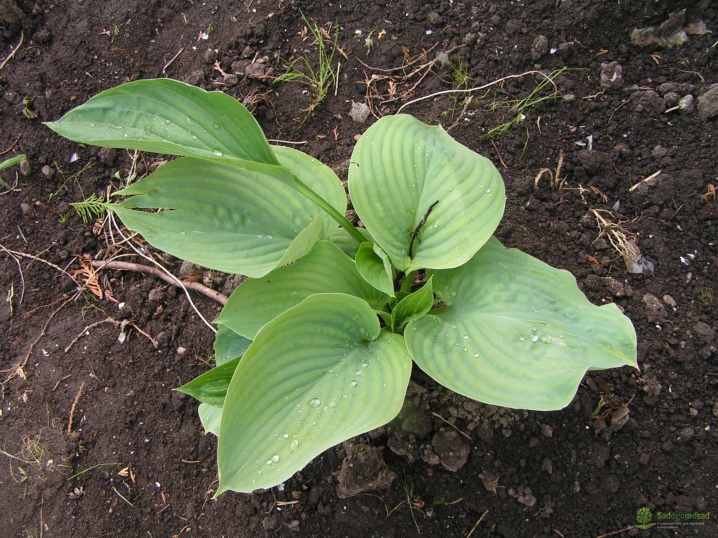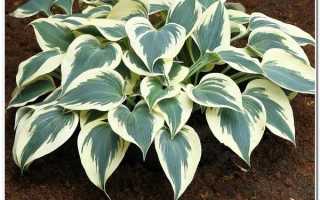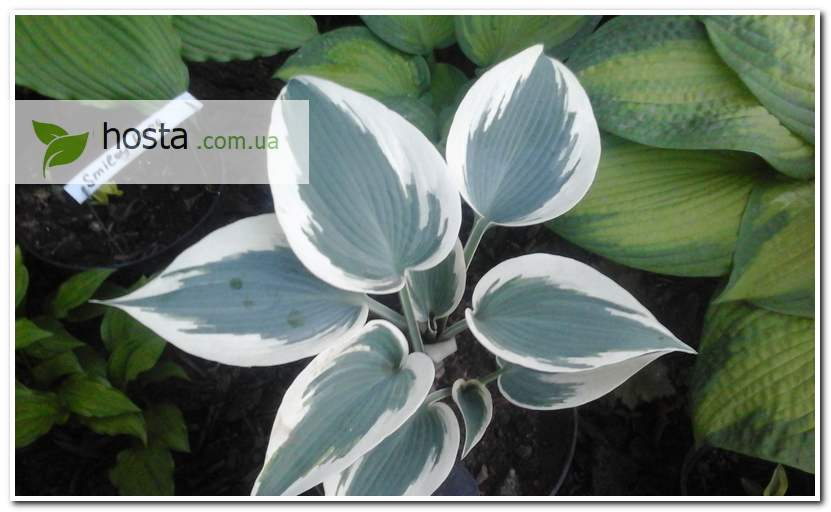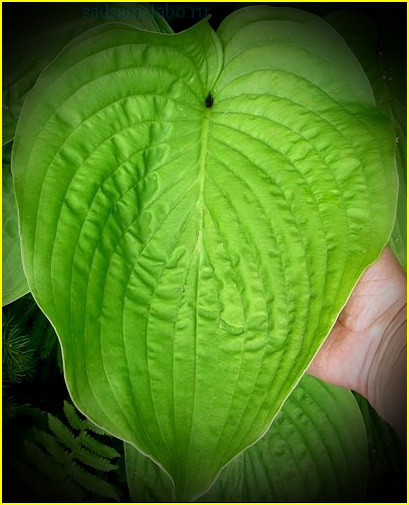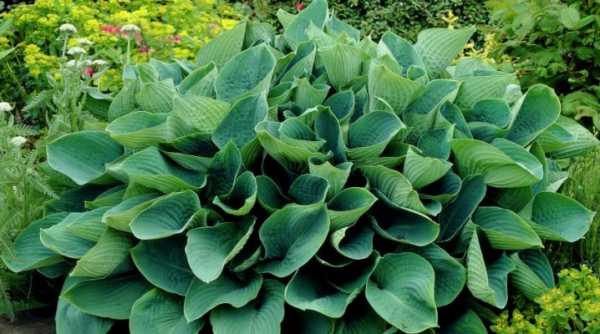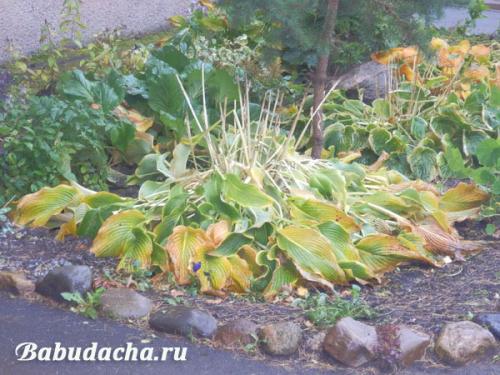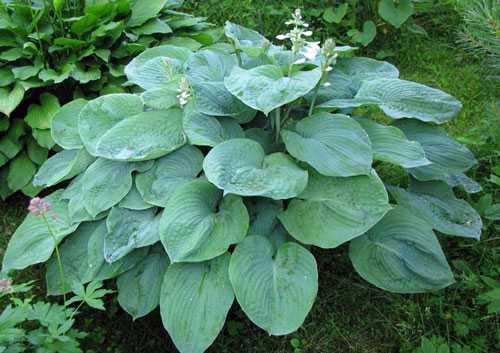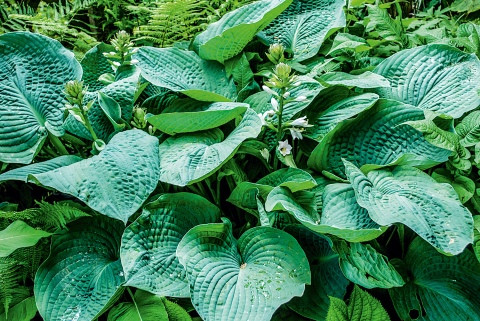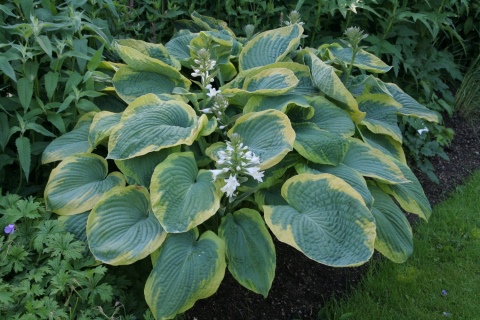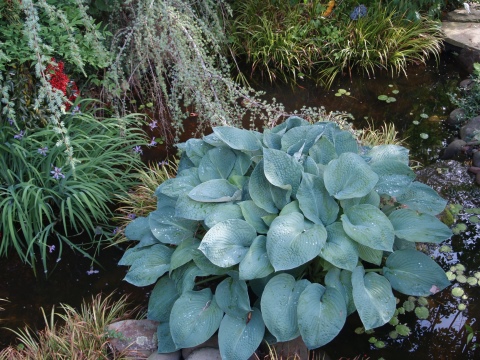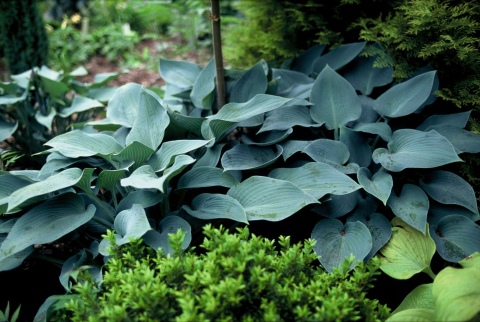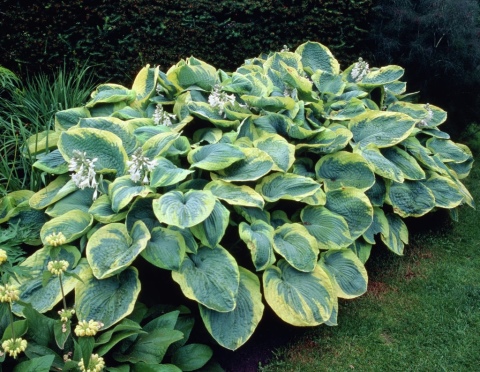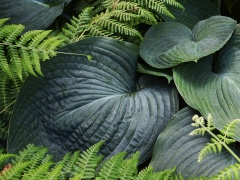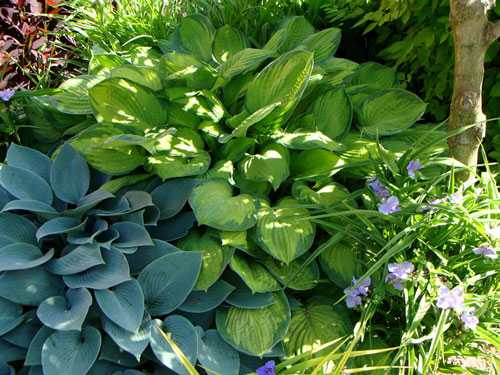Hosta in landscape design
This decorative perennial is simply irreplaceable when creating flower arrangements, decorating flower beds and flower beds. Hosta combines perfectly with any garden plants and flowers.
For example, small varieties are well suited for beds with a rocky base. They can be used to decorate a small artificial pond, pond or fountain, and place them along shaded paths. Medium-sized varieties can be planted with a variety of garden annuals.
Hosta: Combination with other plants
Miniature hosts will look great next to heuchera, lungwort and soft cuffs. They go well with the hosts astilbe, undersized daylilies, aquilegia, balsams, horny goat weed, begonia or maidenhair stopoid. Hosta plantain and Hosta Fortune are good for carpet planting. Very beautiful compositions can be obtained from hosts with ferns, garden geraniums and chionodox or muscari. Often, irises, tradescantia, hellebore, asters, chamomile or cereal plants (two-source, turfy pike) are placed next to the hosts. You can often find a combination of hostas with short conifers.
Reproduction methods
You can grow a Siebold host:
cuttings;
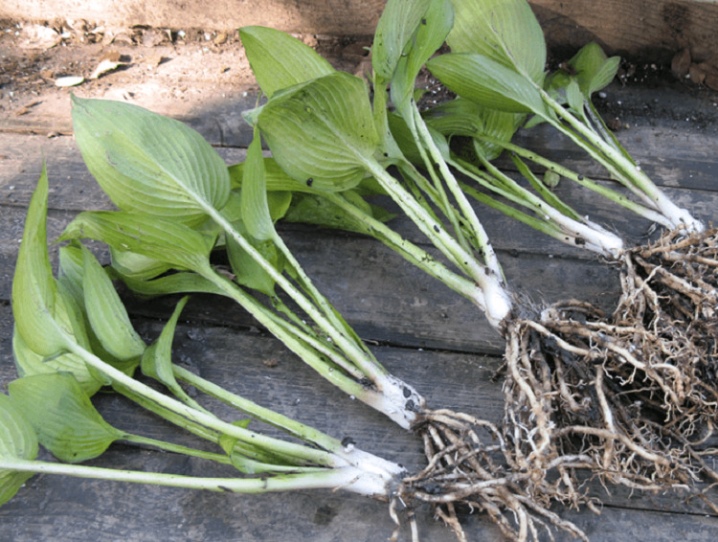
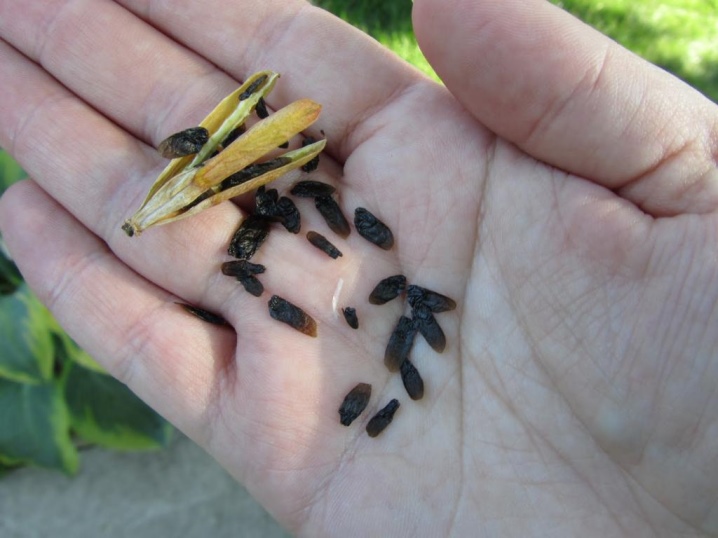
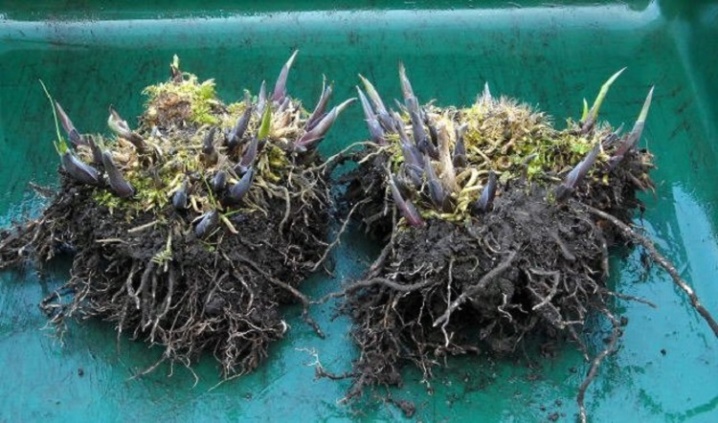
As cuttings, take small young shoots or rosettes with small leaves, having a root and easily separating. In this case, the bush is not dug up. Cuttings are planted directly into the soil and shaded, until they are rooted normally, they must be moistened every day. If the sprouts look lethargic and lifeless, don't worry, they'll sprout in a couple of days. Seed propagation is quite laborious and is mainly used by breeders to develop new varieties, besides, hosta seeds germinate very poorly.

But who wants to give it a try can do it like this:
- the seeds are kept in a stimulant solution;
- soil is compacted in a container and seeds are planted to a depth of 6-7 mm;
- a small layer of perlite is poured on top and the soil is tamped again;
- keep the container at + 20 ° С;
- after a few weeks, shoots appear, when the first leaf is formed, they dive (the soil must be nutritious);
- a little sand is poured onto the soil on top;
- you need to water regularly, but through a pallet;
- to prepare for planting in open soil, the sprouts periodically need to be taken out into the street.
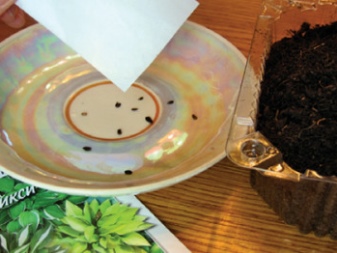
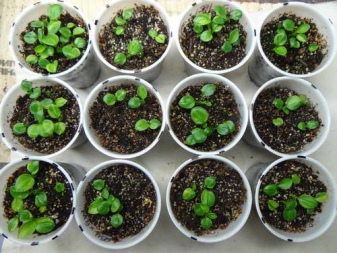
Dividing the bush is the most common breeding method for Siebold hosts. The plant is capable of division at 4-5 years of age. The procedure is carried out in spring or early autumn. The bush is well watered, dug up and divided into several parts with a sharp knife, and each must have at least a couple of outlets.
It is worth planting bushes at the same depth at which the mother plant grew. It is worth moisturizing young plants well and regularly until they are completely rooted.

Growing
Plants are planted in spring or fall. They thrive best in fertile, loose loamy, slightly acidic soil. Although plants also thrive in alkaline soils, they rarely flower in shallow chalk soils, where their leaves take on a yellowish tinge. Large hosts thrive on heavy, nutrient-rich clay soils, but grow more slowly.
They will grow faster if, before planting, the soil is loosened by the introduction of a large volume of coarse sand and garden compost or well-rotted manure in equal amounts. Mulch and water the plants regularly in the fall.
Smaller and dwarf hosts need a looser mixture of peat and garden compost, where leaf humus and loose sand are regularly added. All hosts are fed in spring or early summer with balanced fertilization.In central Russia, hosts winter well, but the appearance of sprouts above the ground sometimes drags on until mid-June.
Hosta Siebold Hosta Tokudama. Planting hostsa in the fall in the ground hostsa Siebold and Tokudama
Hosta is a godsend for a site that is in the shade most of the time. The plant is quite unpretentious to care for, but there are two "buts":
- The host does not like waterlogging, therefore, in a damp area and where groundwater is high, drainage must be provided. However, a moderate amount of moisture and watering is necessary for the plant.
- The host does not like frequent transfers. During growth, it forms a neat, solid, beautiful bush, develops a powerful root system. It is recommended to divide and transplant the host once every 5-6 years. And in the first year of planting, it is better not to divide the hosts at all, otherwise the plant will greatly weaken.
not difficult, the question is - do it?
Most flower growers are in favor of replanting the hosta in early spring, when the plant wakes up, gains strength and is ready to actively grow and develop.
In the dacha literature they write that the best time for planting and dividing the host:
- end of April - beginning of May,
- Autumn: late August - early September,
- Summer: throughout the summer (as it is said in one of the books in the "Modern Estate" series, this has been tested by practice).
But the optimal conditions for transplanting are still early spring. At this time, root growth begins, but the leaves do not unfold yet. The only exceptions are the host Siebold, Tokudama and their hybrids. Their root system is activated only after the leaves, so it is better to replant these varieties later than all the others.
About division
Dividing a bush is the most common host breeding method. They can still be planted with cuttings and seeds, but when dividing, the hosts become decorative faster (after 2-3 years a beautiful, even bush is formed). From one plant, you can get 15-20 divisions for transplantation. Without fail, the host must be transplanted at least once every 5-7 years, otherwise the plant grows strongly, the plantings thicken.
Rooting of the host takes about 4 weeks on average.
For transplantation, the entire plant is dug up and examined. You should try to divide the hosta so that each delenka has at least 2 buds and a maximum of roots. Start cutting from the center using a clean, sharp knife. The place of the cut is sprinkled with fungicide, ash or crushed coal and after 30 minutes, it is lowered into the ground. Before planting, the hosta leaves are cut in half.
About leaving
- In the spring, it is useful for the host to fertilize with complex mineral fertilizers, at this time of the year it especially needs nitrogen. In summer - organic matter (compost and humus). In the summer, the plant must receive as much nutrients as possible in order to enter the winter well.
- Weeding is not needed for the host, almost nothing grows under it. The plant is resistant to diseases, but slugs and snails love it very much. They either need to be collected by hand or use tobacco dust.
- For the winter, the hosta bushes are protected from frost, and the soil is mulched (already in September, until the leaves have died).
- From the beginning of August, feeding is stopped.
- The faded peduncles are cut off so that the plant does not waste energy on the formation of seeds.
When is it better to transplant the host: in spring or autumn?
I think we received the answer to this question today. You can transplant the host both in spring and autumn. But the most optimal conditions for this are created in the spring.

